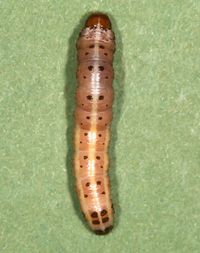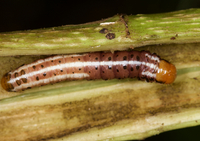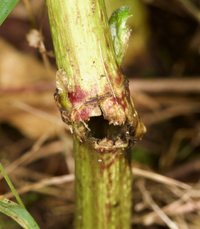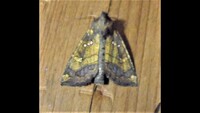
| Recorded by: Tony McBride, Jim Petranka and Becky Elkin on 2023-07-23
Madison Co.
Comment: Large larvae were common on Smallanthus uvedalia; stems had swollen nodules and larvae were in or near these. | 
| Recorded by: Tony McBride, Jim Petranka and Becky Elkin on 2023-07-23
Madison Co.
Comment: Large larvae were common on Smallanthus uvedalia; stems had swollen nodules and larvae were in or near these. |

| Recorded by: Darryl Willis on 2021-09-15
Cabarrus Co.
Comment: | 
| Recorded by: Tony McBride, Jim Petranka, and Becky Elkin on 2021-07-08
Swain Co.
Comment: A larvae that was boring in the lower stem of Hairy Leafcup (Smallanthus uvedalia). |

| Recorded by: Tony McBride, Jim Petranka, and Becky Elkin on 2021-07-08
Swain Co.
Comment: A larvae that was boring in the lower stem of Hairy Leafcup (Smallanthus uvedalia). | 
| Recorded by: Tony McBride, Jim Petranka, and Becky Elkin on 2021-07-08
Swain Co.
Comment: A larvae that was boring in the lower stem of Hairy Leafcup (Smallanthus uvedalia). |

| Recorded by: Tony McBride, Jim Petranka, and Becky Elkin on 2021-07-08
Swain Co.
Comment: A weakened area of the lower stem where a larva was boring in Smallanthus uvedalia (see companion photo of the bore hole that was about 10-15 cm above this point).. | 
| Recorded by: Tony McBride, Jim Petranka, and Becky Elkin on 2021-07-08
Swain Co.
Comment: A bore hole on the lower stem where a larva was boring in Smallanthus uvedalia. |

| Recorded by: Darryl Willis on 2020-09-01
Cabarrus Co.
Comment: |

 »
»



 »
»

